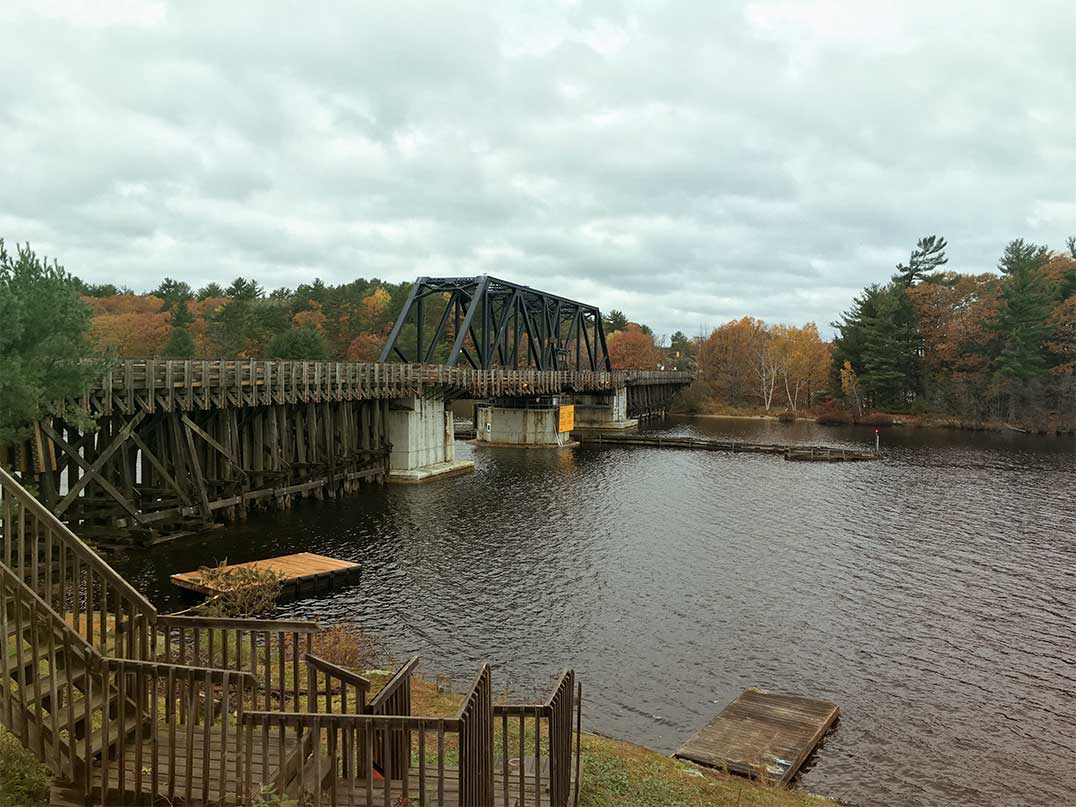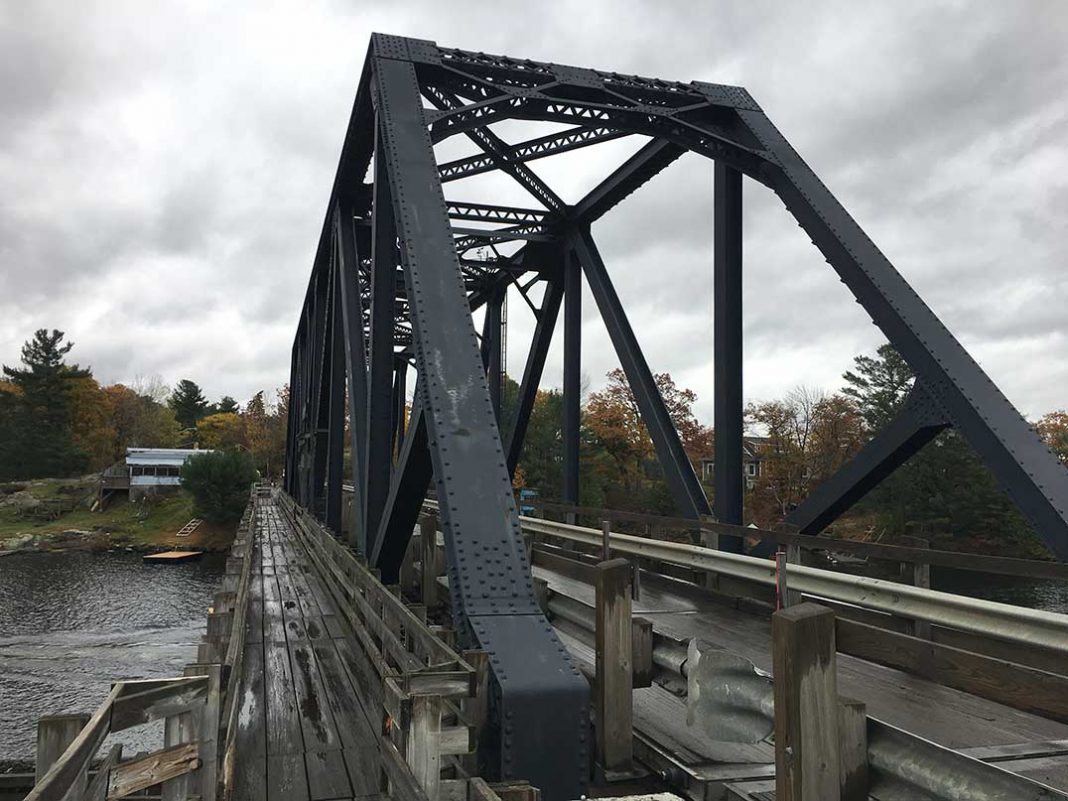WASAUKSING FIRST NATION – Although residents of Manitoulin Island may be either lamenting the impending decommissioning of the Little Current swing bridge or eagerly awaiting a new, higher-capacity crossing, they might not know that their story is also taking place across Georgian Bay.
“In its current state, it’s operational. We had a mechanical failure about a week and a half ago and my understanding is there’s a detailed assessment being completed to assess the options,” said Wasauksing First Nation director of public works Ryan Tabobondung, who noted that the bridge is back in operation but its inevitable retirement is getting ever closer.
Wasauksing First Nation is on Parry Island, just southwest of the town of Parry Sound. Its only road link to the mainland is a one-lane swing bridge that began its life as a railway structure in the early 1910s.
Does that sound familiar?
The Little Current swing bridge was built in 1913 by the Algoma Eastern Railway and is billed as the oldest structure on a provincial highway in Ontario. Studies have been underway for well over a year as to the replacement and future disposition of the structure after it is decommissioned due to failing mechanics and steel that is starting to perforate.
The Wasauksing swing bridge, originally known as the Rose Point swing bridge, is actually older than the Little Current swing bridge by one year. While the bridge to Manitoulin Island crosses the North Channel, the Parry Island swing bridge spans a waterway called the South Channel.
According to reports in the Parry Sound North Star, the Wasauksing bridge broke down for five days in 2017, two days in 2018 and two days so far in 2019. The Little Current bridge has also experienced its share of service disruptions because of its aging mechanical components.
The federal government, which owns the Wasauksing swing bridge through Indigenous Services Canada, has known about the need to replace the structure for quite some time. In fact, Mr. Tabobondung said the first report that suggested its replacement was published in the early 1990s. But that was only the first official warning that the bridge was nearing its end of service life.
“We have three detailed reports from government-funded consultants indicating it should have been replaced on three different occasions,” he said.
Because of this past inaction, Mr. Tabobondung said the community is cautiously optimistic on the new study which is moving forward.

“They’re a bit hesitant on getting their hopes up because they’re well aware that (officials have) said it should have been replaced on three different occasions already,” he said.
The current one-lane structure will be replaced with a two-lane crossing, much like what is happening on Manitoulin. This will eliminate wait times when the bridge is in the closed position, something that has some Wasauksing residents eagerly waiting for the replacement.
The attachment to the swing bridge on a historic level is not quite as strong as the swing bridge in Little Current, according to Mr. Tabobondung. The hard feelings toward the structure largely stem from the island’s colonial past.
Depot Harbour is a non-Indigenous ghost town located on the central north edge of the island. Businessman John Rudolphus Booth owned the Ottawa, Arnprior and Parry Sound Railway to bring timber from the Algonquin highlands to his mill in Ottawa. Georgian Bay was seen as a good site to have as the western terminus of the railway for its deep water and its link which became part of the shortest route to send grain to the Atlantic Ocean.
Due to high land prices in Parry Sound, Mr. Booth located a deep water area with port potential on Parry Island. In order to get the land for Depot Harbour and the rail line, Mr. Booth used provisions of the Indian Act that allowed him to expropriate a total of 425 acres of land away from the First Nation, so long as it was for railway purposes.
Depot Harbour had been a source of waterway pollution in the area throughout its operation and was not favoured by many Wauksasing residents. After the town burned down and the railway pulled out, Wasauksing regained ownership of the land.
“It does elicit some hard feelings that way. A lot of (the pollution) was ongoing up until Depot Harbour physically burned down and moved out,” said Mr. Tabobondung. “I don’t know that residents of Wasauksing were ever happy about the arrangement.”
The Wasauksing bridge replacement study is in the stage of assessing possible crossing options. Mr. Tabobondung said there are two sites currently in consideration and officials are discussing whether to build a new moveable bridge or a fixed option. A tunnel was ruled out early in the process by the federal government.
Indigenous Services Canada is expected to fund the replacement, but much discussion has also taken place in that regard.
“It has always been Wauksasing’s position that this is a federally owned asset so we shouldn’t be talking about First Nations infrastructure money to replace it. That’s money that could be used for other First Nations projects,” said Mr. Tabobondung.
If Wasauksing could manage to take over the ownership of the bridge, it would then have to consider things such as operations and maintenance funding through options such as usage fees. It would also have to plan to fund its eventual replacement on its own.
Mr. Tabobondung said the First Nation expects to have this study phase completed by the new year, which will include a recommended crossing location, structure type and cost estimates.
“We’re on the slow path to replacement; we hope we’re here at the same time as you to get our bridge replaced,” said Mr. Tabobondung.




